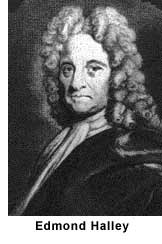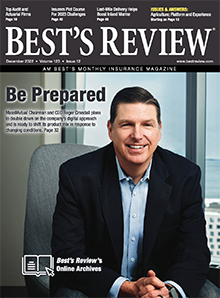Actuarial Expertise owes its beginnings to two early specialists, George A Huggins (1881-1959) in Philadelphia, and George B. Buck (1891-1961) in New York City.
In 1889 the total actuarial population on this continent numbered between 80 and 100 persons. Five of these–four company actuaries and one consulting actuary–having decided amongst themselves to create an organization, invited selected others to become charter members. The initial complement of the Actuarial Society of America was 38. Of the actuaries not so invited, those omitted because they were not chief actuaries of well-established companies were in most cases elected during the next five years. Invitations never were, however, extended to a group of about 25 actuaries, some of marked distinction within the profession, who had moved into general management posts or had retired from active work. This seems unfortunate, depriving the young Society of the ideas that those experienced heads would have contributed.

The profession’s heritage in North America, then of about 80 years duration, had been built upon European foundations dating back to the establishment of probability theory in the mid-seventeenth century, to Edmond Halley’s 1693 mortality table, to James Dodson’s pioneer work on the level premium system that led to formation of the Society for Equitable Assurances on Lives and Survivorship in London in 1762, and to Richard Price’s textbook on life contingencies first published in 1771.(1)
The first company actuary to practice in North America was Jacob Shoemaker of Philadelphia, a key organizer in 1809 of the Pennsylvania Company for Insurances on Lives and Granting Annuities who chose to be that company’s actuary rather than its president. A pioneer of whom the profession may be proud, he was a student of the British experiences of the prior half-century and a practical businessman.
Other life companies soon followed in the Pennsylvania Company’s footsteps, notably, the Massachusetts Hospital Life in Boston, 1823 (Nathaniel Bowditch, actuary) and the New York Life and Trust Company, 1830 (William Bard, president and actuary). But volume of business was small until mutual life insurance on this continent was born in the 1840s, its progenitors being the Mutual Life of New York (Charles Gill, actuary) and the New England Mutual in Boston (Elizur Wright, actuary). Gill and Wright were actuaries of great distinction, the latter’s fame coming through his establishment, while he was Massachusetts insurance commissioner, of abiding standards of life company solvency and of fairness to withdrawing policyholders. The earliest consulting actuary was John F. Entz, who practiced in New York City between 1840 and his death in 1872.
Formation of an actuarial organization was seriously considered in 1867-Elizur Wright had suggested it in 1859, eleven years after the Institute of Actuaries had started in London–but that attempt foundered, apparently on the rocks of professional mistrust and secretiveness. Life insurance itself was going through difficult times; its reputation had suffered so deeply from company failures and extravagances that the public in the United States turned in large numbers to the lure of assessment insurance. In Canada, on the other hand, life insurance was in excellent repute; credit for this belongs in large measure to two actuaries: Hugh C. Baker, who founded the Canada Life in 1847, and John B. Cherriman, Canada’s Superintendent of Insurance from 1875 to 1885.
The Actuarial Society of America came into being at the Astor House in New York City on April 25 and 26, 1889. The moving spirit behind the arrangements and format was the consulting actuary, David Parks Fackler, a man of great ability and dedication, who later succeeded Sheppard Homans in the presidential chair; the proceedings were marked by mutual respect and great care to avoid recurrence of past conflicts. A journal, the Transactions, was instituted immediately; soon afterwards the members chose Ruskin’s “facts for appearances” pronouncement over a host of other suggestions to be their motto. 
The growth by 20-year periods of what 60 years later was to become the Society of Actuaries is shown in the table below.
| Fellows | Associates | Total | Growth Rate | |
| 1889 Charter Members | 38 | – | 38 | – |
| 1909 End of Year | 176 | 107 | 283 | 10.6% |
| 1929 End of Year | 362 | 256 | 618 | 4.0% |
| 1949 Merger, June 3 | 642* | 427 | 1,069 | 2.8% |
| 1969 December 1 | 1,888 | 1,656 | 3,544 | 6.2% |
| 1989 September 1 | 6,241 | 5,443 | 11,784 | 6.1% |
| 1995 November 3 | 7,748 | 9,194 | 16,942 | 6.2% |
*These 642 Fellows were the survivors of the 897 Fellows who qualified in the years 1889 to 1948. As noted in a paper published in TSA [XLII (1991): 35-58], a list of those 897 persons is on file in the Society’s library.
Growth rates shown are annual compound rates. The numbers of members in 1909 and 1929 include members of the Actuarial Society and the American Institute of Actuaries with duplication’s removed. The corresponding growth rate during the two years 1990 and 1991 was 6.9 percent.
The average growth rates in the era of the present Society have been consistently above 6 percent per annum, sharply higher than the experience of preceding periods. This contrast reflects the determination of the leadership starting in the 1950s to achieve growth rates high enough to meet perceived needs for actuaries.
In 1896, after some hesitation, an examination system was adopted; the first Fellow by examination qualified in 1900. For some years the examinations were viewed purely as tests of professional qualification, but in the second decade of this century their educational value came to be appreciated; steps were taken to provide textbooks and lectures.(2)
When some European actuaries launched an international organization in 1895, the North Americans were supporters from the outset; the Fourth International Congress convened in New York in 1903. Another item of special interest was election of the first woman member of the Actuarial Society, Emma Warren Cushman of Boston, also in 1895.
In the short period of seven years between 1909 and 1916, the number of North American actuarial bodies jumped from one to four. In 1909, actuaries of young life companies in the Midwestern and southern United States organized the American Institute of Actuaries with headquarters in Chicago. In 1914 the actuaries and statisticians of United States property and liability companies formed what became the Casualty Actuarial Society to meet their own professional needs. And in 1916 actuaries of fraternal societies created the Fraternal Actuarial Association. The resulting organizational proliferation, although somewhat contained by the 1949 merger of the two life actuarial bodies and the voluntary dissolution of the fraternal body in 1980, has defied consolidation efforts of recent years; new perceived needs have more than offset these changes.(3)
life companies in the Midwestern and southern United States organized the American Institute of Actuaries with headquarters in Chicago. In 1914 the actuaries and statisticians of United States property and liability companies formed what became the Casualty Actuarial Society to meet their own professional needs. And in 1916 actuaries of fraternal societies created the Fraternal Actuarial Association. The resulting organizational proliferation, although somewhat contained by the 1949 merger of the two life actuarial bodies and the voluntary dissolution of the fraternal body in 1980, has defied consolidation efforts of recent years; new perceived needs have more than offset these changes.(3)
During the first half of the twentieth century, actuaries learned to cope with many new circumstances, notably introduction of group insurance, actuarial involvement in pensions, World War I, the influenza pandemic of 1918, severe financial problems with income disability and annuity coverages, the great depression of the 1930s, social security, World War II, and the advent of computers. Actuaries’ experiences with these contain many lessons of value even today.
Actuarial expertise in the pension field owes its beginnings to two early specialists–George A. Huggins (1881-1959) in Philadelphia and George B. Buck (1891-1961) in New York City. Huggins, who never joined any of the actuarial bodies,(4) established himself as the ranking authority of his era on clergy pensions; his work is documented as far back as 1904. Buck gave greatly needed guidance to New York City authorities on municipal pension systems. Gradually after that other actuaries formed consulting firms to serve private and governmental pension plans.
In the quarter-century from the late 1930s (when the United States social security system was new on the scene) to the early 1960s when studies of pension plan structure, investment of pension reserves and broad questions of terminology and concepts of soundness had been explored in depth, the pension segment of the actuarial profession reached maturity. One consequence was an immense increase (which has continued since) in the proportion of Society members practicing in the actuarial consulting field.
Another field that has shown major expansion and evolution has been that of health insurance, both individual and group. Despite heavily adverse experience with disability benefits incorporated into individual life policies in the second and third decades of the twentieth century, major life companies led the way in issuing modern health insurance policies in the 1950s; the Society of Actuaries responded by bringing health insurance into its educational curriculum and publishing a series of texts, the first in 1956, the latest in 1988.
The 1949 merger that created the Society of Actuaries was the inevitable consequence of steadily greater membership overlap and jointly conducted activities, particularly in the educational areas. The selected headquarters city was Chicago; a staff consisting of an Executive Secretary and three assistants served a membership of just over 1,000 persons. The new body was incorporated in Illinois, efforts at federal incorporation having proved fruitless.
The Society of Actuaries promptly set about developing a professional system appropriate to the broadened actuarial responsibilities of the 1950s and turned its  attention to the clear need for governmental recognition in both Canada and the United States. Service to members in the emerging specialties of individual contracts and employee benefits was provided in both the educational and meeting program activities. Guides to professional conduct were promulgated; steps to make the profession known to young people in high schools and colleges were taken; research was broadened; and the new field of computers was vigorously explored. In 1957 the Society hosted the Fifteenth International Congress of Actuaries, its theme being electronic data processing.
attention to the clear need for governmental recognition in both Canada and the United States. Service to members in the emerging specialties of individual contracts and employee benefits was provided in both the educational and meeting program activities. Guides to professional conduct were promulgated; steps to make the profession known to young people in high schools and colleges were taken; research was broadened; and the new field of computers was vigorously explored. In 1957 the Society hosted the Fifteenth International Congress of Actuaries, its theme being electronic data processing.
The instruments found necessary to achieve professional recognition were two new bodies: the Canadian Institute of Actuaries in Canada and the American Academy of Actuaries in the United States, both founded in 1965 through the harmonious cooperation of all the North American actuarial bodies.
In 1968 staff activities in the Society of Actuaries underwent major change by creation of the Executive Director post. Until 1980 the incumbent was required to be a Fellow, but recognition of the primarily administrative duties involved then resulted in recruitment of John E. O’Connor, Jr. to lead greatly increased staff participation in all phases of administration and research.(5)
The entire profession was affected, and to some degree buffeted, in the 1970s by economic and political events rivaling in intensity those that confronted our forebears in the early 1930s. We had been anxious to become a recognized element in the business world but found the speed of that immersion breathtaking.
Central to these events were the severe inflation, the intensity of consumerist crusades, such negative developments as the prevalent preoccupation with short-term profits in business enterprises, and demands upon actuaries to assume major unaccustomed responsibilities.
Needs asserted by accountants and stock analysts caused balance sheet and income statement formats to be radically changed and duplicated. The extent of risk assumption by insurance companies was modified by introduction of yield-based and index-based contracts and by “unbundling” of protection and savings elements that many in the industry reluctantly accepted. Actuaries found their own logical arguments in favor of sex-based mortality tables unable to triumph over social forces as these became an issue in women’s rights campaigns; this has also had some impact on the work of the pension actuaries. Involvement of two actuaries in the Equity Funding scandal resulted in an unhappy public blot upon the profession’s reputation.
The Society embarked upon new stances and procedures to cope with developments such as these. The extent of its members’ specializations was recognized by changes in program formats, notably, meetings devoted to special subjects and the creation of Special Interest Sections within the Society. Stochastic analysis began to take its place alongside the deterministic approaches considered normal since earliest actuarial eras. And actuaries in the United States found themselves responsible for certifying the adequacy of policy reserves to an extent new to them, though long familiar to Canadian actuaries. Likewise, the evolution of pension legislation in the United States and Canada since the 1960s has enhanced the responsibility of pension actuaries for certifying costs and liabilities.
One consequence of all this turmoil was the rapid introduction of continuing education efforts, particularly through the seminar approach. Another was the first-ever government licensing of actuaries engaged in employee benefit work. Yet another was an increased interest in development of actuarial skills in management techniques, long-range planning and even futurism.
Changes in the Society’s structure included computerization of office records; coordination of activities of the several professional bodies through the Council of Presidents formed in 1972; and an unsuccessful attempt at consolidation of the bodies themselves. A new internal publication, the Record, which was introduced in 1975, proved beneficial in disseminating discussions on a wide variety of topics.
A new unit, the Actuarial Education and Research Fund, was organized to spur and facilitate basic research work. One veteran body, the Fraternal Actuarial Association, initiated steps to close its 64 years of service as the special need for its existence disappeared.(6)
Through the 1980s key economic factors continued to gyrate. The prevailing inflation rate was kept within bounds that came to be called moderate, although they were double the rates that actuaries of former eras had considered ruinous. The average yield on invested assets of life companies, already at historically unprecedented levels, continued to rise, presenting a baffling mixture of opportunities and problems. On the one hand, these demanded that actuaries design products that would be attractive in a period in which modern savings instruments proliferated; on the other, they caused market values of existing bonds to decline sharply and they made policies, even those of highest quality, vulnerable to wholesale replacement. The uncertain relationship between interest, inflation and salary levels has had a marked impact on pension design and funding, and in Canada on the debate on surplus ownership.
The long-term trend in the general mortality rate continued steadily downward. A consequence was that mortality charges needed to support nonsmoker policies were reported in 1980 [TSA XXXII (1980): 207] as below 2 per 1000 up to age 47 for males. The effect of such low mortality probabilities upon life insurance buying attitudes is yet unmeasured.
were reported in 1980 [TSA XXXII (1980): 207] as below 2 per 1000 up to age 47 for males. The effect of such low mortality probabilities upon life insurance buying attitudes is yet unmeasured.
The economic environment of the early 1990s has resulted in the downfall of certain large life insurance companies. The actuarial profession now faces the challenges of analyzing the causes that brought about these results and recommending changes that can reestablish a solid foundation for public confidence in the financial integrity of the insurance industry.
The actuarial profession gained visibility when “actuary” was named the best job in America by the Jobs Rated Almanac in two of its three published editions. The 1988 and 1995 reference books put the actuarial profession at the top of the list of 250 professions ranked on criteria such as work environment, job outlook, security, and stress.
END NOTES
1. Recommended readings about the pre-1889 actuarial profession are: Robert Henderson, “Prominent Names in Early Actuarial History,” TASA XXIV (1923): 1-13; M.E. Ogborn, Equitable Assurances, reviewed by T. Hall and Z. Jarkiewicz in TSA XIV (1962): 536-39; Robert B. Mitchell, From Actuarius to Actuary, reviewed in TSA XXVI (1974): 641- 42; E.J. Moorhead, Our Yesterdays: the History of the Actuarial Profession in North America 1809 -1979, Schaumburg, Ill., Society of Actuaries, 1989, Chapters I and II; and Anders Hald, A History of Probability and Statistics and Their Applications before 1970, reviewed in TSA XLII (1990): 757-59.
2. Recommended readings about the evolution of the educational system are: Charles A. Spoerl, “The Actuarial Examinations,” TSA I (1949): 42-68, and Preston C. Bassett, “To Become A Member,” TSA XXXVII (1985): 1-12.
3. Recommended reading on events leading to merger is: Reinhard A. Hohaus, “The Origin of the Society of Actuaries,” TSA I (1949): 10-41.
4. Biographical particulars on George Huggins can be found in the Society archives.
5. Recommended reading on this era’s events is: Victor E. Henningsen, “Society of Actuaries–Its First Twenty Years,” TSA XXI (1969): 591-621.
6. Recommended readings on events of this decade are: “Reports of Historians”: John C. Maynard, TSA XXVII (1974): 519-30; Gary Corbett, TSA XXVII (1974): 533-48; and Harold G. Ingraham, Jr., TSA XXIX (1977): 453-73.
Copyright by the Society of Actuaries, Schaumburg, Illinois. Reprinted with permission.
The Huggins Advantage
Our firm’s philosophy centers on our commitment to the highest level of quality service delivered by quality people. Our long tradition of providing responsive, technical excellence to our clients’ needs through an integrated team approach requires that we focus on quality in every aspect of every engagement.



